Scottish Health Survey 2017: summary report
Key findings from the Scottish Health Survey 2017 report.
This document is part of a collection
Chapter 2: Mental Wellbeing
Mental wellbeing was significantly lower in the most deprived areas with average, age-standardised WEMWBS scores
- In 2017, 17% of adults exhibited signs of a possible psychiatric disorder ( GHQ-12 score of four or more). Those aged 16-24 were most likely to have a GHQ-12 score of four or more (22%) with those aged 65 and over least likely (12-13%).
- Adults living in the most deprived areas were more likely to have a GHQ-12 score of four or more, indicative of a psychiatric disorder, than those living in the least deprived areas (24% in the most deprived and 12% in the 2nd least deprived and 14% in the least deprived).
Average levels of wellbeing, as measured by the Warwick-Edinburgh Mental Wellbeing Scale ( WEMWBS), were lowest among young adults and those in middle ages
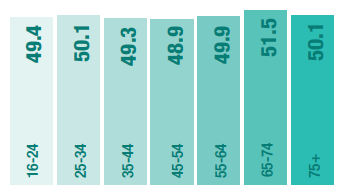
Mental wellbeing was significantly lower in the most deprived areas with average, age-standardised WEMWBS scores
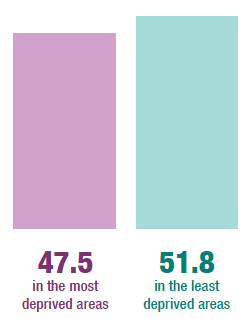
There has been a steady and significant increase in the proportion of adults who have 2+ symptoms of depression

- In 2014-2017, prevalence of two or more depressive symptoms was much higher in the most deprived areas than in the least deprived areas (20% compared to 5%) as was prevalence of two or more symptoms of anxiety (17% compared to 7%).
- The proportion of adults that self-reported to have ever attempted suicide in 2016/2017 (6%) was the same as in 2014/2015 and significantly higher than the proportion reported in 2008/2009 (4%).
- In 2016/2017, over a fifth (21%) of young people aged 16-24 reported that they had ever self-harmed. This was significantly higher than for than older people (decreasing to less than 0.5% among those aged 75 and over).
The proportion of adults that had attempted suicide differed significantly by area deprivation level
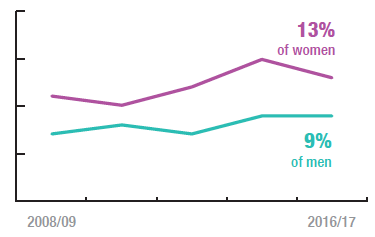
The proportion of adults who have reported 2 or more symptoms of anxiety has increased since 2008/09
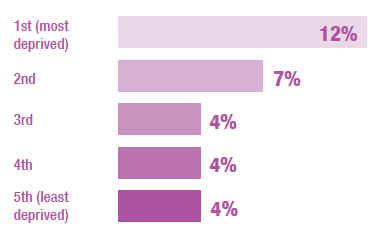
- In 2015/2017, lower mental wellbeing was associated with adults who had ‘unrealistic time pressures at work’ ‘always’ or ‘often’ compared with those that reported it to happen ‘seldom’ or ‘never’ (49.6 compared with 51.7 WEMWBS mean scores).
- Mental wellbeing was significantly higher for those who agreed that their colleagues provided support than for those who disagreed (51.5 compared to 47.3 mean WEMWBS score).
The percentage of adults who describe their job as very/extremely stressful has remained stable
14% in 2009
16% in 2017
Mental Wellbeing was lowest among those who described their jobs as very/extremely stressful
49.1 - Very stressful/ Extremely stressful
50.3 - Moderately stressful
51.5 - Not at all stressful/ Mildly stressful (mean WEMWBS score)
Older adults were more likely to believe most people in their local area could be trusted
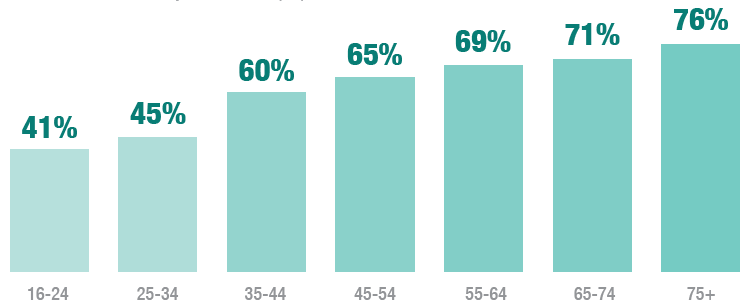
- Adults who believed that ‘most people can be trusted’ had a significantly higher WEMWBS mean score than those who believed that you ‘can’t be too careful in dealing with people’ (51.9 compared with 47.6).
- Mean WEMWBS scores increased with the number of people that adults reported they could turn to for support in a crisis (mean WEMWBS score for those who had 15 people or more they could turn to was 52.2, compared with 48.3 for those who reported to have between 1 and 5 people).
Women were more likely than men to contact friends, relatives or neighbours outside the household almost everyday
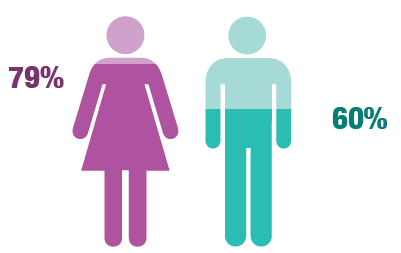
Contact
There is a problem
Thanks for your feedback